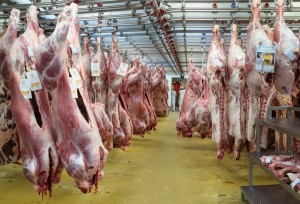
For workers in the food industry and individuals as well, it is important to have the food handling training in the kitchen in order to minimize cross contamination of bacterial. Bacteria could be transferred from food to food, food to kitchen utensils and verse versa. Following the food handling training will also minimize the amount of victims of food poisoning as a result of poor hygiene in the kitchen.
A lot of research has gone into the materials used in teaching the correct food handling procedures in the food handling training programs. Storing food at the right temperature is one of them; food should never be stored within the temperature of 50 centigrade to 63 degrees centigrade. Food stored or left in this temperature range are exposed to bacterial infection.
Some food items have to be cooked at a temperature not lower 75 degrees centigrade for a minimum of two minutes so as to kill the bacteria in it. It is recommended to use a thermometer to verify that the food is being cooked at the right temperature, especially when cooking for a large number of people. Otherwise, some part of the food will have bacterial present in them which is harmful to the consumer’s health.
When cooking food product that in large portion such as a large chunk of meat, it is recommended to cut into smaller piece in order for every piece of the food to cook evenly at the right temperature. Always steer food with a lot of water content regularly while cooking it; it ensures that the contents are cooked evenly at the right temperature.
Thawing is also a vital food handling procedure taught in food handling training programs. Frozen food must be defrosted completely before cooking; it will ensure that the food is evenly cooked. The thawed food must never be re-frozen and must be kept in a container away from other food items.
After cooking, hot meals should be left to cool for not more than 2 hours before storing it in the refrigerator. Though the amount of time to leave the hot food to cool before storing it in the refrigerator depends on the type of food; never leave any hot food to cool before storing it in the refrigerator for longer than a period of 2 hours. The hot food should not be stored in the refrigerator earlier either; otherwise the hot food with increase the temperature inside the refrigerator which leads to defrost then contamination of the food items in the refrigerator.
Another food handling procedure to avoid food contamination is your trip to the grocery store. Food items must be separated in the shopping cart and in the grocery bags. It is recommended to wrap food items such as animal, seafood with an extra layer of plastic before placing them in the grocery bag so the bacteria in them do not get transferred to any food item in the bag. Also, make sure that the dairy products are not licking or damaged in any way.

